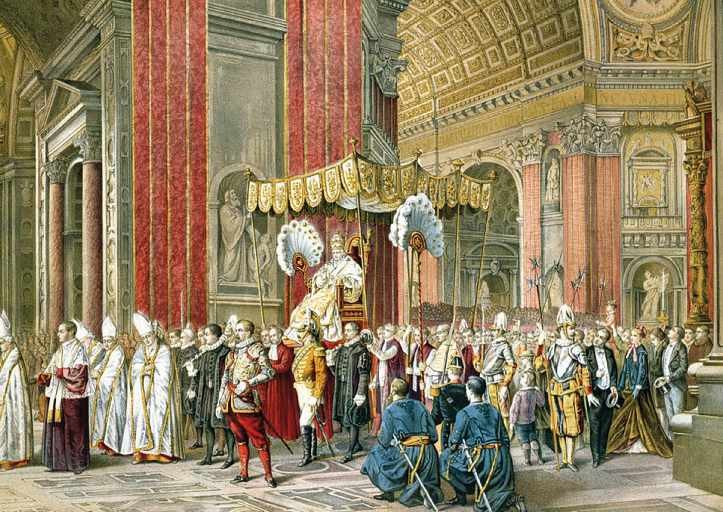
Pope Pius IX arrives on the sedia gestatoria for the First Vatican Council in 1869
For researchers in the history of Italian violin making, the mists of time still conceal a plethora of unexpected surprises. A delve into the life of the 19th-century Roman luthier Filippo de Filippi (1810–78) revealed a treasure trove of interesting information on his circumstances, particularly with regard to his association with the Papal court of the day. Filippi was an intellectual who experienced firsthand the historical events of the Italian Risorgimento which, after a great deal of bloodshed and multiple revolutionary movements, finally led to the long-awaited unification of Italy. The first thing to note is that there has historically been some confusion as to Filippi’s true identity. For decades it has been assumed in several quarters that he was the same person as the almost contemporaneous Filippo Filippi (1830–1887), the most important Italian music critic of the 19th century. A friend and ardent admirer of Verdi, this Filippi wrote several works of music scholarship and contributed to the Milan-based journals La Perseveranza and Gazzetta musicale di Milano. Both men were honorary members of the Accademia Nazionale di Santa Cecilia in Rome, and the instruments (and scores) of Filippi the luthier that remain in the Accademia’s collection were erroneously attributed to Filippi the critic.
Whereas the latter was born in Vicenza in 1830, Filippo de Filippi appeared 20 years earlier, on 28 February 1810. He was born into a noble family from Velletri, a historic town located about 25 miles south of Rome, whose origins date back to the ancient civilisations of the Volsci and the Etruscans. Like many scions of the noble families of that time, Filippi received a civil education and musical studies appropriate to his rank, attending school in Rome. The duties of his noble status meant that upon completing his studies, he was appointed to the office of the Guardia Nobile. Formed by Pope Pius VII at the start of the 19th century, the papal ‘Noble Guard’ was made up of nobles who constituted the lay elite of the Vatican and held particularly important political and ceremonial roles. They were particularly close to the Pontiff and always paraded alongside when he was carried in procession on his gestatorial chair.